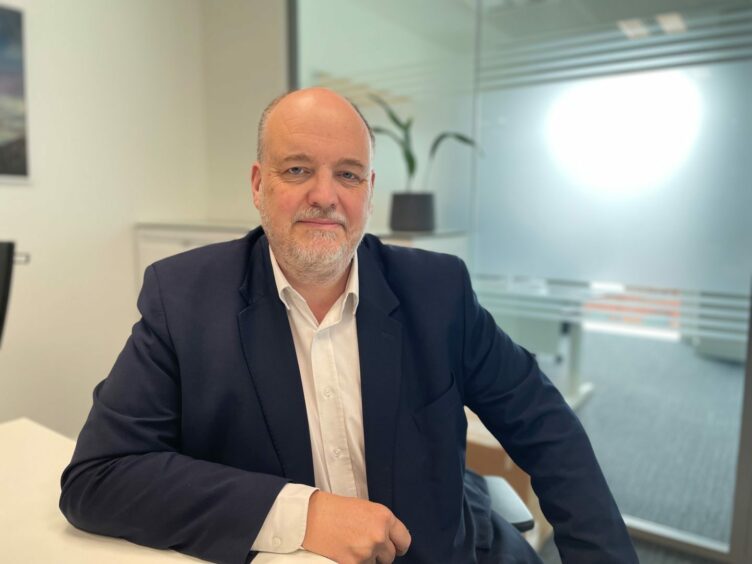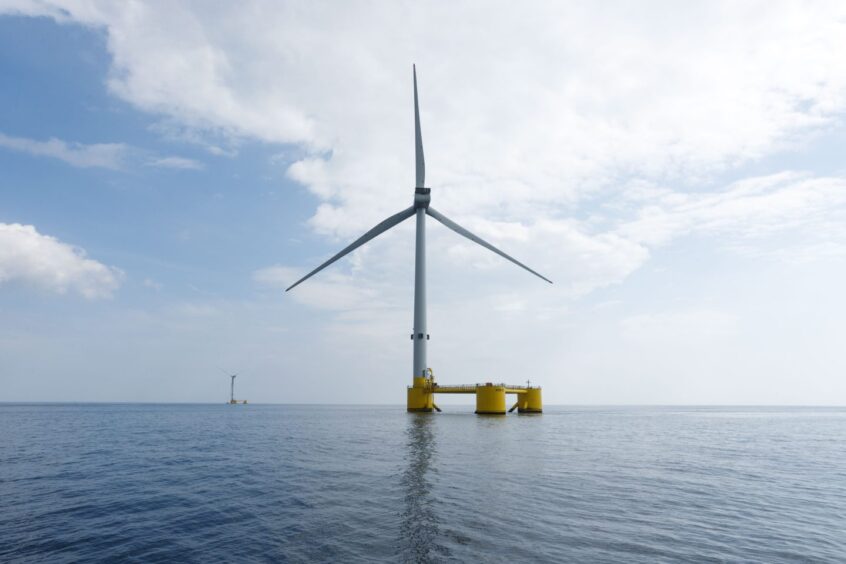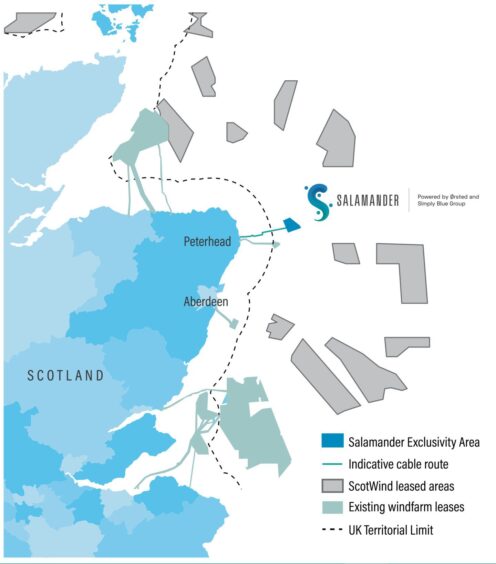
Delayed consenting and a lack of government support for innovation projects will impact the viability of the UK’s ambitious wind targets, according to the project director of the Salamander Floating Windfarm.
“This year, we’ve reached two major milestones and that’s the submission of our offshore consent application and our onshore consent application, which was in August,” Hugh Yendole told Energy Voice while at the Floating Offshore Wind conference in Aberdeen.
“So, we’re basically waiting for consent.”
First minister John Swinney also highlighted tackling consenting delays in his keynote speech at the Aberdeen event last week, saying that government authorities must focus on meeting their regulatory requirements.
However, he put the onus on developers to take responsibility for the speed of the consenting process.
Swinney told delegates: “The stronger the applications, the better developed they are, the more they address the sensitivities that all of us know we have to look at, the more efficient, effective and timely decisions we can take.”
Reflecting on the progress of the Salamander project, which won a licence in the Scottish government’s Innovation and Targeted Oil and Gas (INTOG) leasing round, the project directors said there was still work being done as his team awaits government approval.
Yendole added: “Waiting is the wrong word because there’s a hell of a lot of activity happening on the project from an engineering perspective, from supporting the consents process.
“But we’re in this position now where, as soon as the Scottish government grants us consent, it unlocks our ability to go ahead and really start engaging and pushing the project forward.”
To fit into the innovation category of the INTOG round, Salamander limited itself to a “modest” capacity. However, its current plans aim to test new approaches to offshore wind operations.
He commented: “It’s got this 100 MW floating element, but also 100 MW onshore battery and it’s the first time these two have been integrated the way we’re going to do it on a floating offshore wind farm.”
He said that, due to this innovative design, “the sooner we get that consent, the better.”
Scottish government aims to speed up consent… but is it enough?
Swinney told Energy Voice last week: “The Scottish government has increased the resources that we have available to determine consenting decisions of this type.”
“I am confident the Scottish government is focused on having an efficient and dynamic consenting regime that responds to the needs of the market and enables decisions to be taken in an orderly, proper and well-considered fashion to enable development to take its course.”
Yendole shared support for the focus on speedier consenting from government, but added that he hopes politicians put their money where their mouths are.
“From a salamander perspective, what I’d like to see happen is that the applications that are already in – especially those which are really low impact such as ours – get granted quickly so that we can get on and do what we’re meant to do, which is unlocking the supply chain for the bigger industry that should come afterwards.”
He said that people who work in consenting for the government are “great”, however, “government sometimes doesn’t recognise that these people can’t work 24 hours a day.”
Yendole added: “It needs to be correctly resourced, and I hope that the messages we get about more consents being applied are also backed up with the resources required to deliver those consents in a sensible timeframe, so that projects don’t end up considering consent timeline a risk.
“There are enough risks to deal with already. It would be great if the certainty of a defined timeline was more real.”
CfD reform for smaller projects
Once a project gets a much-anticipated thumbs up from the government, it may still need further support – and small projects, like Salamander, are not seeing that.
During the ‘rapid-fire updates’ panel at the end of the first day of Renewable UK and Scottish Renewables’ conference, project director of the Pentland project, Richard Copeland highlighted the issue.
He said that no demonstrator projects were approved for the government’s Allocation Round 6 (AR6) process.
In response to this, Yendole commented: “Economies of scale play a big role in this, and I think that with smaller projects designed to unlock supply chain, such as Salamander, there are certain nuances to the Contracts for Difference (CfD) process that I don’t think correctly reflect the requirements that some of these smaller projects have to get over the line – and to become something that somebody wants to invest in.”
He said there need to be “tweaks” made to the UK government’s CfD scheme in order for smaller projects to compete with bigger ones.
The Salamander boss said he hopes the government has taken note of this following the results of AR6, which only saw one successful bid for an offshore wind project.
“Otherwise, these innovation projects and, to a certain extent, the test and demonstration projects will not be able to deliver what they need to,” Yendole shared.
“Salamander was constrained to 100MW offshore, so that it fitted into this innovation envelope. We could have done much more than that, but it was decided that that the 100MW was an innovation project.
“But if it’s then disadvantaged because of that size, I don’t think that’s something which works well long term.”




